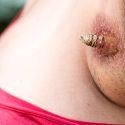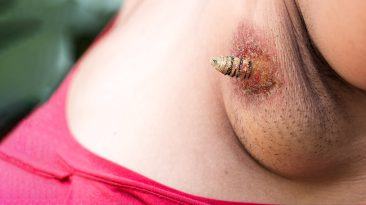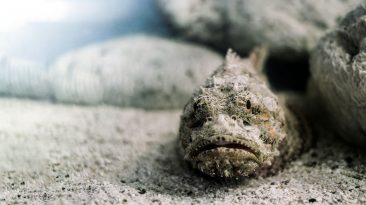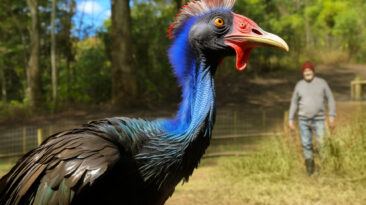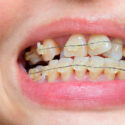The sharp, piercing pain came from out of nowhere. Your throat tightens as you stare down your attacker.
The World Health Organization says snakes bite about 5 million people annually, causing 81,000 to 138,000 deaths.
Should you fight back?
Does sucking the venom out really work? And where are these deadly creatures hiding?
Your best chance of surviving these fatal bites is with antivenom. But you need to identify what your potential killer is. Don’t worry. We’ve got your back. Here is our list of the top five deadliest snake bites. Knowing your enemy can help you survive.
Number 5: Inland taipan
To avoid snake bites, be especially careful in places like sub-Saharan Africa, South Asia, Southeast Asia, and other developing or tropical countries. They’re where up to 95% of snake bites happen. But there’s always an exception, and you’ll find this creature in Australia.
The inland taipan’s color varies from brownish light green to a richer color, often called a dark tan. These broken chevron markings are its dark scales, which grow on an angle. They can grow bigger, but these snakes average about 1.8 m (5.9 ft) long.
The inland taipan’s venom contains a complex mix of toxins that paralyze muscles, inhibit breathing, cause hemorrhaging in blood vessels and tissues, and damage muscles. The venom can kill a human in about 45 minutes because it acts so fast. Some people have died within 30 minutes.
As the venom speeds through our bodies, don’t waste time trying to suck out the poison. Instead, try to be calm, and roll over onto the recovery position. Staying there until you get medical help will keep your airway open and clear, and you won’t choke on any fluid or vomit.
Number 4: Banded krait
Found in Southeast Asia, this colorful snake has alternating black and yellow bands down its body. These beautiful creatures can grow up to 1.8 m (5.9 ft). But its neurotoxic venom can cause severe brain damage. And during the Vietnam war, it killed hundreds of American soldiers.
If you get bitten, it’s crucial to slow the spread of venom throughout your body. To do this, try to position yourself to keep wherever you were bitten lower than your heart.
Number 3: King cobra
The king cobra is the largest venomous snake in the world and lives in South and Southeast Asia. Easily one of the most recognizable snakes, the olive green with black and white bands on the trunk converges to the massive head. Their huge bodies usually grow about 3-4 m (10-13 ft) long.
The venom contains paralysis-inducing neurotoxins, and its bite spews a lot of venom into the victim. Even elephants die in a few hours after being bitten by a king cobra. And for us? Well, without treatment, you’ve got a 50 to 60% chance of dying.
Use a clean, dry bandage to cover the bite. Try to use a pressure immobilization bandage if possible. Wrap the dressing tightly around the bite. And wrap another bandage all around the limb so it stays still. The less you move, the less venom will spread through your system.
Number 2: Saw-scaled viper
Found in Southern Asia and sub-Saharan Africa, don’t let this 90 cm (35 in) viper fool you. Behind this small, pear-shaped head and reddish-brown spotted body is one very aggressive snake.
Its venom is not as lethal as the other snakes on this list. So why do scientists consider this to be one of the deadliest snakes? Well, it bites early and a lot.
That’s why you should never try killing a snake. It will only increase your chances of getting bitten again.
Number 1: Black mamba
This resident of sub-Saharan Africa is the fastest snake in the world, as it speeds along at up to 5.5 m/s (12.5 mph). The black mamba grows 2 to 3 m (6.5-10 ft) long, and its skin varies from grey to dark brown with a greyish-white underbelly.
A black mamba can kill a human in less than 30 minutes. It’s known for using its lethal fangs to repeatedly stab its victims, who can’t get away fast enough.
To survive, you’ll need to get to a hospital right away. And now that you know what each of these deadly snakes looks like, you can tell the doctors which antivenom you need. And that could save your life.
Sources</h5
- “What To Do If You’Re Bitten By A Snake | Cedars-Sinai”. 2021. cedars-sinai.org.
- “Snake Bites: Symptoms, Treatment, And Types Of Snake”. 2021. medicalnewstoday.com.
- “Snake Bite: Symptoms, Causes, Diagnosis & Treatment”. 2021. Cleveland Clinic.
- “9 of the World’s Deadliest Snakes”. 2021. Encyclopedia Britannica.
- “Snakes On A Chopper: Vietnam Vets Tell Harrowing Serpentine Tales – Legion Magazine”. Legion Magazine.











